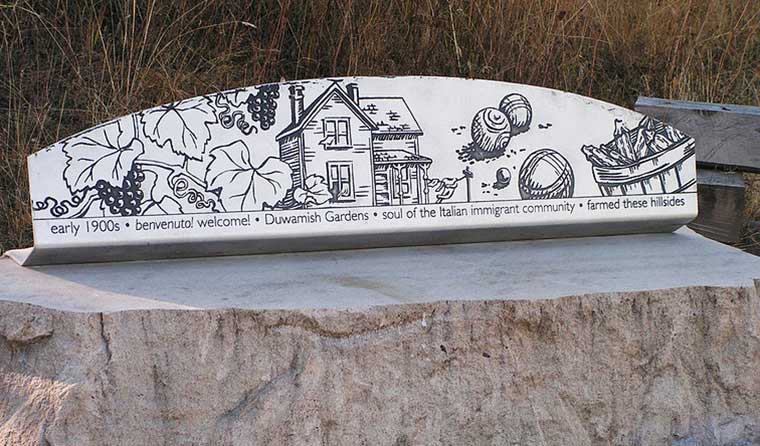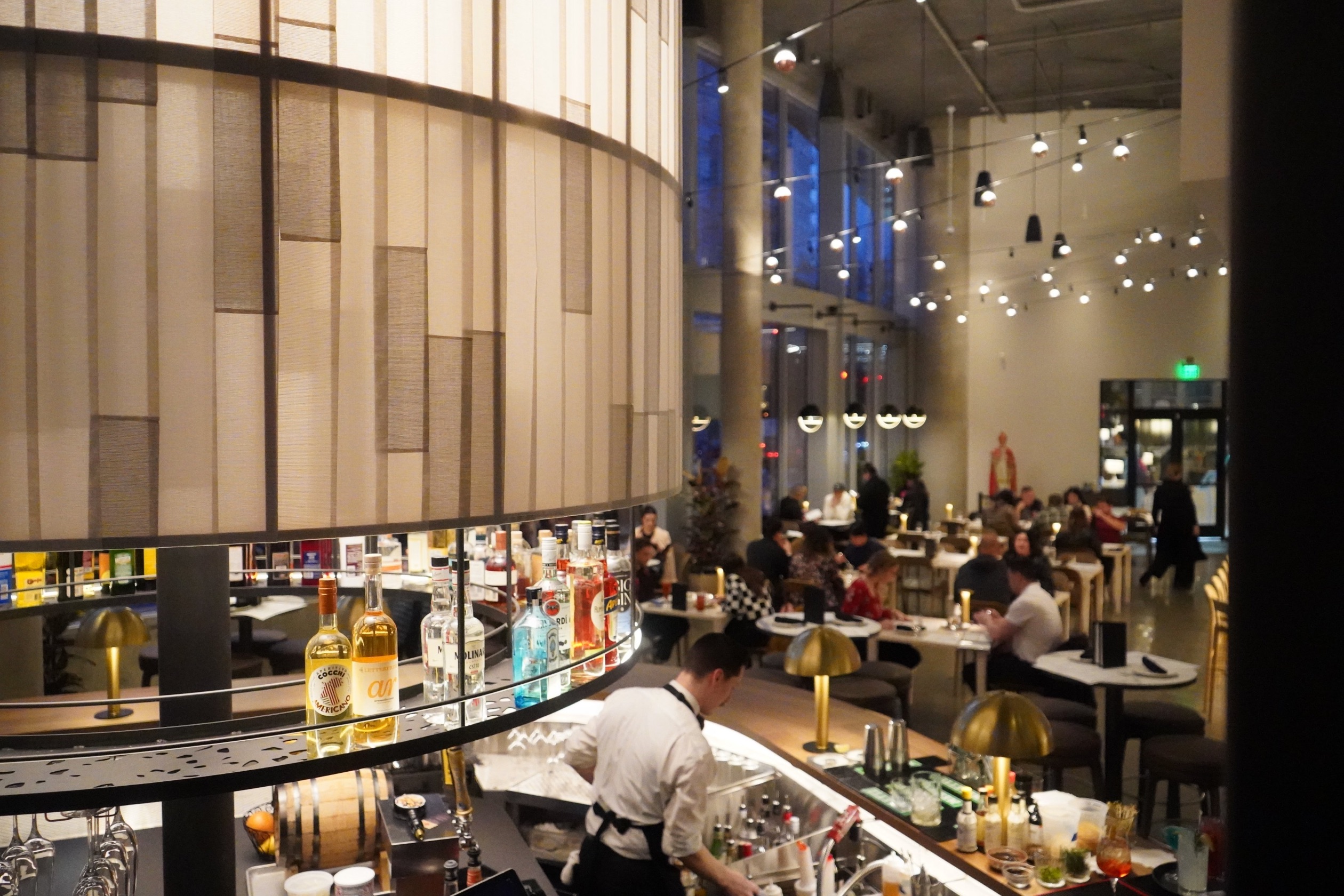There’s a new public park in south King County that owes its existence to Italian immigrants and a truck-farming enterprise once called Duwamish Gardens.
In 2008, city officials in Tukwila, Wash., purchased an historic homestead inhabited for nearly 100 years by the Carosino family. Public and private partners came together to transform the site into a two-acre urban park, complete with walking paths and salmon habitat.
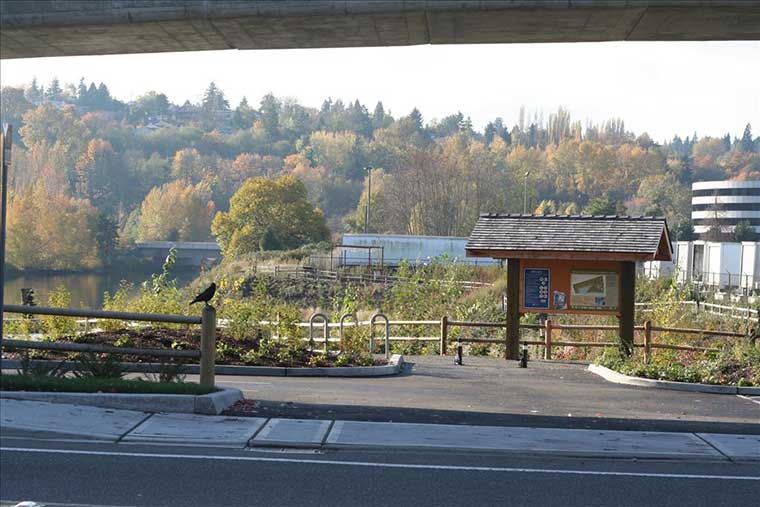
Duwamish Gardens, built on land that once housed an Italian farm co-op, provides shallow-water habitat for juvenile salmon while preserving the area’s local history
Inaugurated last May, the park lies along the Duwamish River, a waterway of great historic and cultural importance to the native tribe of the same name. The new park is currently called Duwamish Gardens, although the city is soliciting new names from the public.
The original tract was settled by Thomas Ray, born in Sioux City, Iowa. In 1876, 24-year old Ray, along with his parents and siblings, journeyed west by wagon train to Washington Territory. The family cleared about 10 acres of land on the banks of the Duwamish River and planted vegetables and fruit trees. Over time, Ray cultivated a commercial garden and orchard, making a good living.
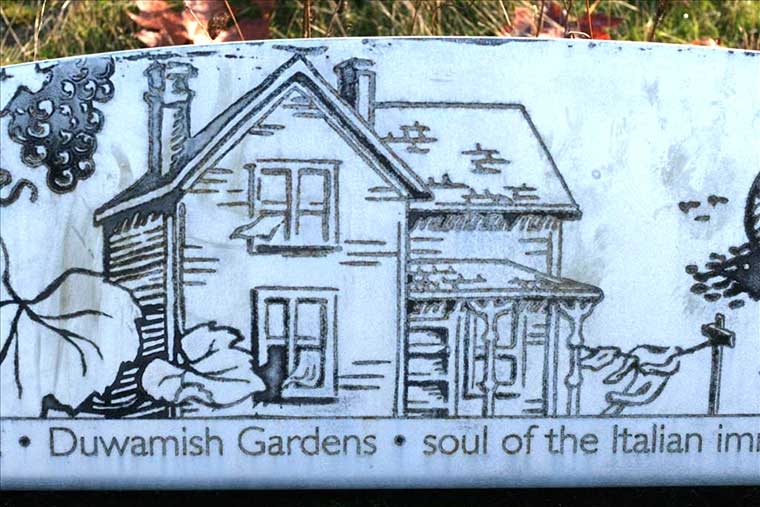
Granite-slab benches are scattered around the new park, telling the story of the history of the site
For centuries before the settlers arrived, the Duwamish River served as a critical transportation highway. During Ray’s time, Native Americans would travel from Canada to Washington Territory via the Duwamish, camping frequently in the hop fields directly across the river from his house. At one point, Ray’s family operated a ferry service across the river until a bridge was built.
As the 19th century came to a close, Italian immigrants started making their way in greater numbers to the Pacific Northwest. Among them were Joseph Carosino and his wife Teresa, natives of Genoa.
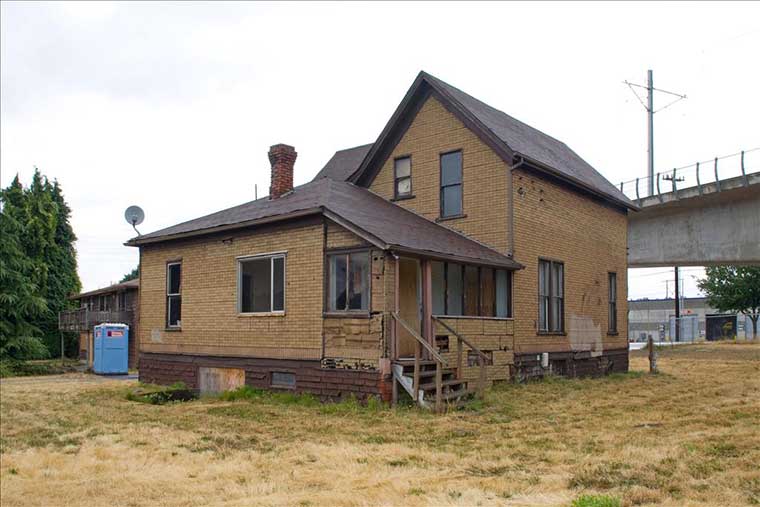
This historic 1882 homestead, shown here more than a century later, was bought by the Carosino family in the early 1900s and sold to the city of Tukwila to create a new urban park
The Carosino’s bought the Ray farmstead with seven other Italian families, turning it into a thriving truck farm. The partners grew squash, zucchini, cauliflower, lettuce, radishes, peas and corn, selling their produce to the military and trucking it into Seattle to sell at Pike Place Market.
The Italians ran Duwamish Gardens as a co-op. The original partners hired other Italians to help them plant and pick the crops. A bunkhouse built on the property housed the unmarried workers who had left their wives and families back in Italy.
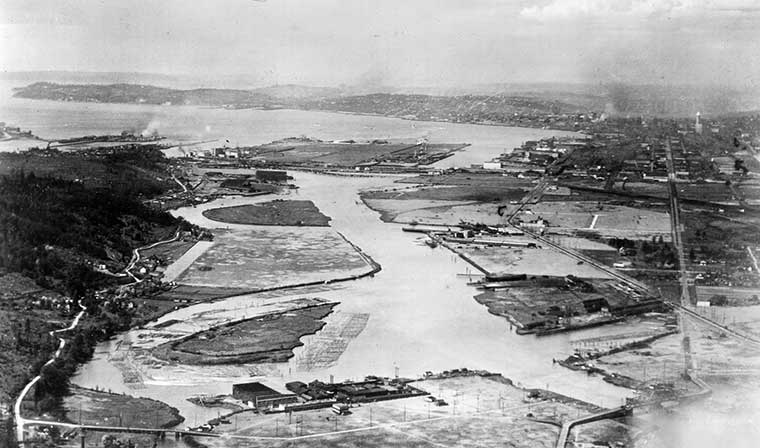
This 1922 photograph shows the Duwamish River, an important transportation highway for native peoples
Before long, the Carosino farm became the heart and soul of south King County’s Italian community. On Sundays, families would gather to spend the day together, socializing, playing bocce or cards, and enjoying a traditional Sunday dinner with homemade wine.
As the Duwamish farmstead grew, more structures were added, including a massive barn, several outbuildings and greenhouses that were heated by a boiler in a separate shed. A second house was added to the original farmhouse to accommodate the growing Carosino family.

Granite-slab benches are scattered around the new park, telling the story of the history of the site
Joseph Carosino died in 1956 at the age of 62, but his wife Teresa and the remaining partners continued to run the farm. They added a fuel station and truck maintenance shop in 1975 and a boat-building shed in 1980.
One by one, the original partners died, leaving Teresa the sole remaining owner. She ran the farm by herself, becoming something of a local legend. But soon, developers began buying up the neighboring farms, replacing them with industrial parks and tract housing. When Teresa died in 1985 at the age of 89, Duwamish Gardens had been reduced from 29 acres to five.
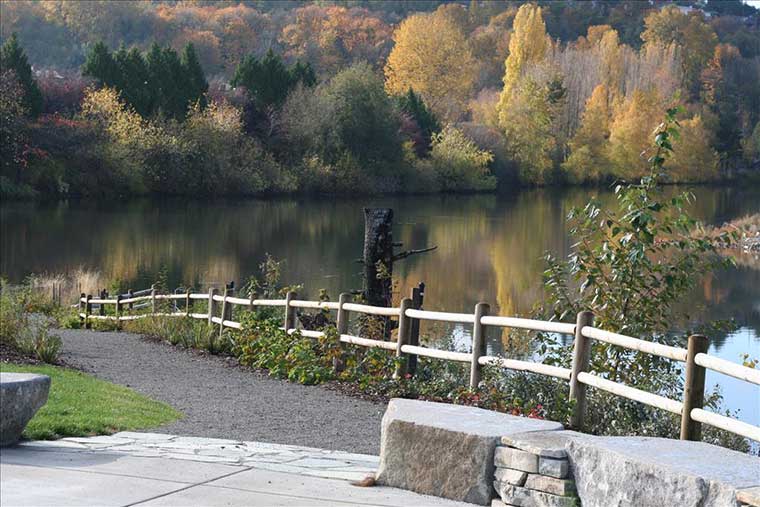
A gravel footpath at Duwamish Gardens Park is dotted with granite benches that pay tribute to the history of the area, including the Italian immigrant farmers who once lived there
The property was impacted even more in 2002, when Sound Transit announced plans to build a light rail line from Sea-Tac Airport to downtown Seattle. The elevated line would run through Tukwila and right past the two Carosino houses, which were still occupied by family members.
The family sold the property to the City of Tukwila in 2008. City officials, aware of the historic significance of the farmhouse, one of the last remaining 19th century structures in the Green-Duwamish Valley, offered to pay a developer to move it but they could find no takers. On July 13, 2015, the original farmhouse was demolished.
To build the parkland, about 30,000 cubic yards of soil was excavated, creating a mudflat and marsh to provide aquatic shelter for Chinook salmon as well as other fish and wildlife species. The shallow habitat area lies within a transition zone, where marine water mixes with fresh water.
An aquatic mixture plays an important role in the life of young Chinook. By spending time in brackish water, the salmon can make the physiological changes necessary to live and thrive in salt water as they migrate into Puget Sound.
“Duwamish Gardens provides nearly an acre of shallow water habitat for salmon where they can feed on insects and invertebrates that live among the vegetation and in the mud and beneath stones,” said Mike Perfetti, City of Tukwila habitat project manager. “The park gives Tukwila residents and visitors a place to access and appreciate the hidden beauty and potential of this important urban river. People can launch a kayak, raft or canoe, or walk the shoreline trail with outstanding views of the river and beautiful surrounding hills.”
Scattered along the park’s gravel footpaths are granite-slab benches that incorporate decorative panels telling the history of the site—the Coast Salish people, the area’s fish and native plants. One of the panels illustrates the Carosino farmhouse, shown surrounded by grape clusters, vegetables in a bushel basket and a bocce set.
The bench includes several key phrases that memorialize the Italian community that once inhabited this tract. One panel proclaims: “Benvenuto! Welcome!” Another section asserts: “Duwamish Gardens: Soul of the Italian immigrant community.”
Thanks to the park planners’ thoughtfulness, the interpretive signage will help ensure that the Carosino family and the other Italian immigrants who farmed these hillsides and lived along the shores of the Duwamish River nearly a century ago will not be forgotten.
